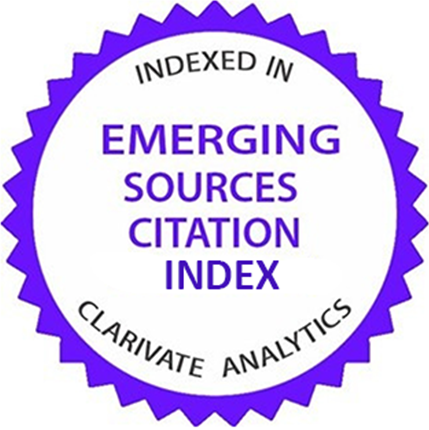A mortality indicator in acute pulmonary embolism: the inferior vena cava contrast reflux score feasibility
Abstract
Objective: Acute pulmonary embolism (APE) is frequently associated with high morbidity and mortality rates. Numerous studies have investigated the prognostic significance of cardiovascular computed tomography (CT) parameters. This study aimed to investigate potential CT scan predictors of 24-hour mortality in APE and to evaluate the value of the inferior vena cava (IVC) reflux score calculated on CT scan in predicting mortality.
Methods: This study was a single-center, retrospective study. Approval from the local ethics committee (decision no. 2023/76) was obtained before patients’ data scanning. Patients who were admitted to the emergency department (ED) of a tertiary education and research hospital in Turkey between January 1, 2019, and December 31, 2021, who were diagnosed with APE at CT scan in the ED and whose treatment was started, and who did not meet the exclusion criteria were included in the study. The relationship between CT scan findings and early and late mortality was evaluated.
Results: The study population comprised 226 patients, meeting the inclusion and exclusion criteria. Of the 226 patients, a total of 39 (17.3%) patients died, 16 (7.1%) within the first 24 hours. In evaluating CT scan parameters, the inferior vena cava (IVC) reflux score showed a statistically significant difference between the groups with and without mortality (24-hour P=0.001; 30-day P=0.001). Patients who died within the first 24-hour and 30-day after admission showed a reflux grade 3 into IVC more often than survivors (24-hour odds ratio (OR): 14.57, 95% confidence interval (CI): 3.64,58.1; P=0.001); 30-day (OR: 6.54, 95% CI: 2.51,16.98; P=0.001). However, other CT parameters were evaluated, and no statistical relationship was found between the groups with and without mortality.
Conclusion: The cardiovascular CT scan findings may not be suitable for use as predictors of mortality. However, the IVC reflux score may be a good indicator of both early and late mortality.
2. Giuntini C, Di Ricco G, Marini C, Melillo E, Palla A. Pulmonary embolism: epidemiology. Chest. 1995;107(1 Suppl):3S-9S.
3. Cozzi D, Moroni C, Cavigli E, Bindi A, Caviglioli C, Nazerian P, et al. Prognostic value of CT pulmonary angiography parameters in acute pulmonary embolism. Radiol Med. 2021;126(8):1030-6.
4. Surov A, Akritidou M, Bach AG, Bailis N, Lerche M, Meyer HJ, et al. A new index for the prediction of 30-Day mortality in patients with pulmonary embolism: the pulmonary embolism mortality score (PEMS). Angiology. 2021;72(8):787-93.
5. Gong XW, Yuan YD. Meta-analysis of risk factors for all-cause mortality of pulmonary thromboembolism. Zhonghua Yi Xue Za Zhi. 2013;93:2534-40.
6. Aslaner MA, Karbek Akarca FK, Aksu ŞH, Yazla M, Can Ö, Kuş G, et al. Diagnostic accuracy of early systolic notching in pulmonary embolism. J Ultrasound Med. 2022;41(3):637-44.
7. Schoepf UJ, Costello P. CT angiography for diagnosis of pulmonary embolism: state of the art. Radiology. 2004;230(2):329-37.
8. Stein PD, Fowler SE, Goodman LR, Gottschalk A, Hales CA, Hull RD, et al. Multidetector computed tomography for acute pulmonary embolism. N Engl J Med. 2006;354(22):2317-27.
9. Remy-Jardin M, Pistolesi M, Goodman LR, Gefter WB, Gottschalk A, Mayo JR, et al. Management of suspected acute pulmonary embolism in the era of CT angiography: a statement from the Fleischner society. Radiology. 2007;245(2):315-29.
10. Palm V, Rengier F, Rajiah P, Heussel CP, Partovi S. Acute pulmonary embolism: imaging techniques, findings, endovascular treatment and differential diagnoses. Rofo. 2020;192(1):38-49.
11. Righini M, Robert-Ebadi H, Le Gal G. Diagnosis of acute pulmonary embolism. J Thromb Haemost. 2017;15(7):1251-61.
12. Donzé J, Le Gal G, Fine MJ, Roy PM, Sanchez O, Verschuren F, et al. Prospective validation of the pulmonary embolism severity index. a clinical prognostic model for pulmonary embolism. Thromb Haemost. 2008;100(5):943-8.
13. Ozsu S, Erbay M, Durmuş ZG, Ozlu T. Classification of high-risk with cardiac troponin and shock index in normotensive patients with pulmonary embolism. J Thromb Thrombolysis. 2017;43(2):179-83.
14. Furlan A, Aghayev A, Chang CC, Patil A, Jeon KN, Park B, et al. Short-term mortality in acute pulmonary embolism: clot burden and signs of right heart dysfunction at CT pulmonary angiography. Radiology. 2012;265(1):283-93.
15. Bach AG, Nansalmaa B, Kranz J, Taute BM, Wienke A, Schramm D, et al. CT pulmonary angiography findings that predict 30-day mortality in patients with acute pulmonary embolism. Eur J Radiol. 2015;84(2):332-7.
16. Seon HJ, Kim KH, Lee WS, Choi S, Yoon HJ, Ahn Y, et al. Usefulness of computed tomographic pulmonary angiography in the risk stratification of acute pulmonary thromboembolism. Comparison with cardiac biomarkers. Circ J. 2011;75(2):428-36.
17. Araoz PA, Gotway MB, Harrington JR, Harmsen WS, Mandrekar JN. Pulmonary embolism: prognostic CT findings. Radiology. 2007;242(3):889-97.
18. Ghaye B, Ghuysen A, Bruyere PJ, D’Orio V, Dondelinger RF. Can CT pulmonary angiography allow assessment of severity and prognosis in patients presenting with pulmonary embolism? What the radiologist needs to know. Radiographics. 2006;26(1):23-40.
19. Bailis N, Lerche M, Meyer HJ, Wienke A, Surov A. Contrast reflux into the inferior vena cava on computer tomographic pulmonary angiography is a predictor of 24-hour and 30-day mortality in patients with acute pulmonary embolism. Acta Radiol. 2021;62(1):34-41.
20. Morris MF, Gardner BA, Gotway MB, Thomsen KM, Harmsen WS, Araoz PA. CT findings and long-term mortality after pulmonary embolism. Am J Roentgenol. 2012;198(6):1346-52.
21. Atasoy MM, Sariman N, Levent E, Çubuk R, Çelik Ö, Saygi A, et al. Non severe acute pulmonary embolism: prognostic CT pulmonary angiography findings. J Comput Assist Tomogr. 2015;39(2):166-70.
| Files | ||
| Issue | Vol 8 No 2 (2024): Spring (April) | |
| Section | Original article | |
| DOI | 10.18502/fem.v8i2.15460 | |
| Keywords | ||
| Inferior Vena Cava Reflux Score Mortality Indicator Pulmonary Embolism | ||
| Rights and permissions | |

|
This work is licensed under a Creative Commons Attribution-NonCommercial 4.0 International License. |










